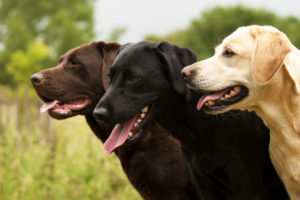Contrary to common or popular knowledge, most dogs are dog (and sometimes people) selective meaning they, like humans, do not get along with anyone and everyone. Some dogs, have trauma and negative experiences associated with dogs or people and therefore can become fearful and display signs of discomfort in these situations. Owners who have identified problematic behaviours in their dog often use colour-coded equipment to keep themselves and their dog safe when out in public. This colour coded system is not intended to be negative, rather a positive way to ensure the safety and happiness of dogs and people.
So, what is the colour coding system for?
The colour-coded gear is to indicate and inform others about health or behavioural issues a dog might be suffering from and what that dog needs to be able to enjoy their walk outdoors. It follows a general ‘traffic light’ colouring system.
Regardless of your dog’s personality or desire to interact with others, it is important to respect the space of another dog by keeping your own dog under control with a lead, reliably trained recall, and the ability to resist the urge to approach another dog.
What do the colours represent?
Red – CAUTION! I want space!
This means space from dogs, people, kids, bikes, and potentially many other things. If you see a dog with red coloured gear, potentially even wearing a muzzle for extra precaution, give as much space as you physically can and do not engage with this dog at all (no eye contact, talk/noises, or touch). Ensure your dog does not approach this dog at all from any distance.
Orange – NO DOGS! I do not mind people just no dogs!
This means the dog is either fearful of other dogs or could get overly excited when they see other dogs. Ensure you give as much space as you can and ensure your dog is more focused on you than the other dog to keep everyone calm. Ensure your dog does not approach this dog at all from any distance.
(Light) Yellow – NERVOUS!
This colour means the dog may be nervous of just being outdoors, of loud noises, of movement, and many other things depending on the day. Similarly, to the previous colours, do not interact (no eye contact, talk/noises, or touch) with this dog and ensure your dog keeps their distance also.
Green – FRIENDLY
This means the dog likes meeting new people and dogs. Remember, these dogs are generally in the minority of dogs so still practise common sense and caution when interacting. Be sure to leave before a greeting or experience escalates or turns negative.
Blue – TRAINING/SERVICE
This means the dog is an assistance, service, working dog or being trained on certain behaviours such as focusing on the handler when outside or learning to ignore other people or dogs. As with the others, keep your dog close to you and allow them to continue without interacting.
Purple – DO NOT FEED
This colour means simply not to feed the dog anything. Whilst to most it is common knowledge not to feed an unfamiliar dog without permission from their owner first, it still happens. This dog may have food intolerances or allergies, is on a diet or weight loss program or could even get protective over food.
White – DEAF/BLIND
This colour means the dog may be of sound temperament but has hearing or visual impairment and therefore extra caution needs to be practised to accommodate such as giving plenty of space when walking near as not to startle the dog.
Yellow – ADOPTION
This can add a little bit of confusion, but the wording on the gear helps in this case. Many rescue organisations or foster carers will attach a bright yellow bandana or vest on dogs that are available for adoption when outdoors. This is often a great invitation to head on over and have a chat with the owner to talk about the pup they are trying to find a forever home for.
Pet insurance can help by covering a portion of the eligible vet bill if the unexpected happens. Because it is difficult to predict the costs of veterinary care, it can help to have measures in place to help prepare for the unexpected. Check out our partner network and explore our policy tools to find a pet insurance policy.
Not all conditions or items are covered by Pet Insurance. Refer to the applicable Product Disclosure Statement for information about coverage and exclusions.








